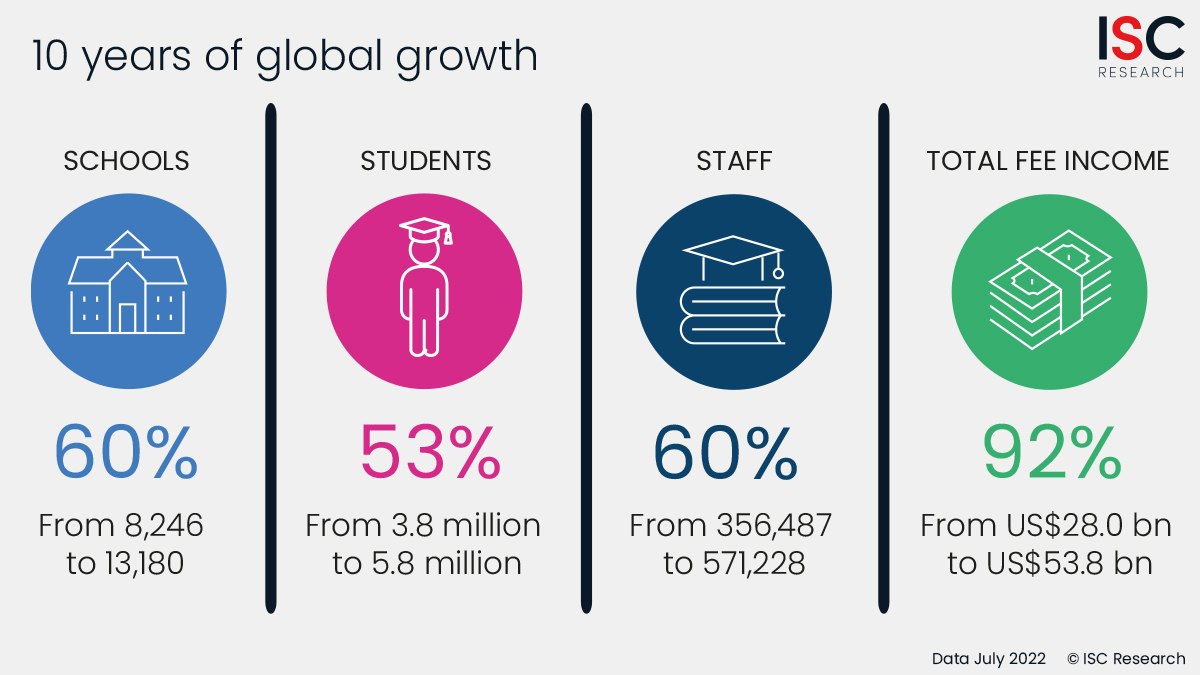As of July 2022, ISC Research data recorded a total of 13,180 English-Medium international schools around the world enrolling 5.8 million students aged between 3 and 18 and employing 571,000 teaching staff. The sector emerged from the pandemic stronger than ever and continues to demonstrate defensive resilience, generating over $53.8 billion USD in annual school fees.
Parent aspirations
Enrolment within the global international schools market continues to grow, with the number of students rising by 200,000 from July 2021 to July 2022. Some increase in demand has come from parents moving their child from a government-funded school to an international school as a result of the perception of better provision during campus closures. Every family and their needs are different, but common reasons for choosing an international school repeatedly arise. The promise of learning in English and sitting globally recognised exams which offer reliable access to global career potential remains the main appeal of international schools.

Increased access
The international school market has gained momentum as the economies of countries improve. As personal incomes rise, so does the possibility of sending a child to a local international school which then becomes a high priority for many families. As a result, a growing number of international schools are being established, or adapting their fees, with the purpose of meeting the needs of more families. This is causing expansion of the mid-market fee sector of the market.
Most popular international school qualifications
The British A and International A Levels remain the most popular exit qualifications offered by 32% of international schools serving senior students, with the International Baccalaureate Diploma offered by 27%. Advanced Placement remains a popular option too, offered by 15% of international schools.
Language learning in international schools
As international schools have become the domain for many more host nation children, language learning has shifted from English only to bilingual and multilingual offerings. International schools have a duty to promote internationalism, and for many schools that means starting with the promotion of languages. Recent research by ISC Research into international mindedness highlights how bilingual and bicultural learning is increasing amongst international schools as a way of supporting a multicultural context that values the host country of the school. 36% of international schools now offer learning in the language of English and at least one other language, compared to 29% just five years ago.
Other emerging trends within the international school market are the growth in the presence of online international schools (87 according to ISC Research), and the movement of school brands and groups into some emerging markets including Japan and India.
Understanding the trends and emerging markets helps schools, suppliers, and developers to make informed decisions on planning and development.
ISC Research produces a whole range of report and data solutions providing detailed market data and intelligence to inform decisions on school planning, school improvement, and to support brand new school development and investment. Stay informed of latest market developments by signing up to the ISC Research newsletter.



